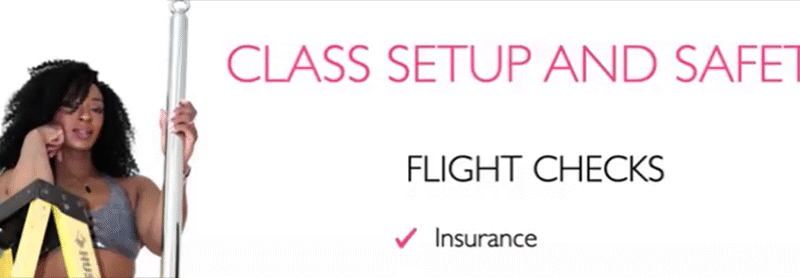A train-cation is a trip (usually away from home) where you focus for a specific…

Writing effective customer surveys to get the data you need
Having a full understanding of your target audience’s wants and needs is crucial to running a small business. Pole studio owners or instructors probably spend lots of time face to face talking with customers, and that is a great way to get feedback and learn how you can improve your business.
But when you don’t have (enough) face time with customers, you want to tap into your broader audience, or you feel that customers you see regularly are too polite to give you useful constructive criticism, a survey might be your next best tool. Surveys can be sent out with a regularly scheduled email newsletter or independently using a survey platform like SurveyMonkey.
Writing a survey to get the responses you need can be tricky business. Survey-takers can interpret questions differently or get confused by the metrics you have chosen to quantify an answer. Here are some tips to help you create a successful survey.
Start with the end in mind and work backward
It’s tempting to ask customers for feedback about every aspect of your business, and there are times when that is appropriate. For example, “How do you like to be communicated with?” can happily exist on the same survey as “What class time(s) best work for your schedule?” But if the survey starts getting too long and unwieldy, narrow your focus. Start by asking yourself what information you want to get out of this survey, and then write only questions that are going to get you those answers. If you have several questions about your customers’ engagement with your business through technology, then maybe your survey should only address that. Other topics can wait for another survey.
Target your survey
Our school district LOVES to send out surveys. “How are we doing?” surveys, strategic planning surveys, “What would you like to see in the future?” surveys—you name it, I have answered questions about it. On a recent survey, I was asked whether the school should invest in post-high school planning and college admissions. Well, of course they should, but neither of those questions applied to my elementary school kids. Perhaps one survey should have been sent to to parents of high schoolers, while the elementary parents received a separate survey. If your customers or clients can be broken down into subgroups, consider whether doing that is appropriate for your survey.
Make sure your questions and metrics line up
“Do you like coffee?” is a straightforward question, but if customers can only answer “true” or “false,” your answers are not going to produce useful feedback. When writing survey questions, ask yourself these questions on how best to quantify them.
- Does the question call for a multiple choice answer?
- Are you looking for only one answer, or will customers be able to choose more than one answer?
- Does my question contain an “or”? Questions containing “or” should have an option to select both or neither. For example, “Do you like coffee or tea?” doesn’t give survey-takers who enjoy coffee in the morning and tea in the afternoon an answer to choose from.
- Does my question require a scaled answer? Example: “On a scale of 1 to 5 (with 1 being the worst and 5 being the best), how do you rank ____________?” It’s useful to leave an optional comment space under ranking questions so that survey-takers can explain why they chose their answer. Another way to write ranking questions is to give a list of, say, 10 options and ask people to choose the three answers that resonate with them.
- Does my question involve numbers? Word questions with numbers carefully. If you ask “How much are you willing to spend on a class package?” and your options are $50-$100 or $100-$150, $100 will be counted twice because $100 is included in both answers. Be sure to set your numbers apart. In this example, it would look like $50-$99 and $100-$149.
Choose your wording carefully
The most recent school district survey gave us pause. One of the questions asked us to rank various initiatives in order of importance to us. One choice was “Classrooms are equipped with he best technology,” and another was “Technology is optimized in the classroom.” Hmmmm….This sparked some discussion. Do the two questions mean the same thing? Or does one mean that the school is constantly spending its budget buying the best technology for the classroom, while the other one means that the teachers optimize the technology that they already have? Have a few people read over your questions, and if there is any debate about what they mean, rewrite.
Be ready to act on feedback
When writing a survey, ask yourself whether you are prepared to act on all possible outcomes. If, for example, your survey results show that your customers think your leggings are too expensive, are you prepared to find a new vendor for your fabric or change your processes to help lower the costs? Or, conversely, are you prepared to somehow add value to your product to justify the cost? If survey feedback highlights that your teaching tactics ruffle some students’ feathers, are you prepared to adjust your teaching style?
On a final note, if your survey comes back all rainbows and sunshine, there might be something missing. Although it feels great to get positive feedback (See How to Provide Constructive Feedback), survey responses with no constructive criticism are not very useful. In fact, it’s a red flag. Check how you worded your survey and whether you provided space for comments and less-than-rosy opinions.



